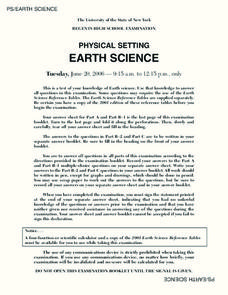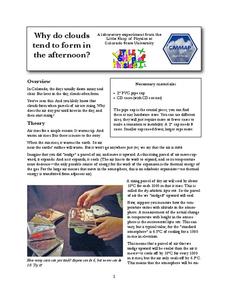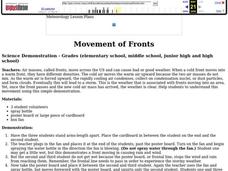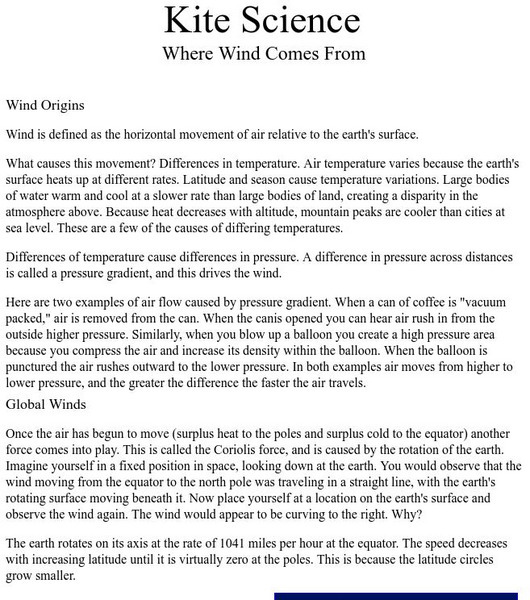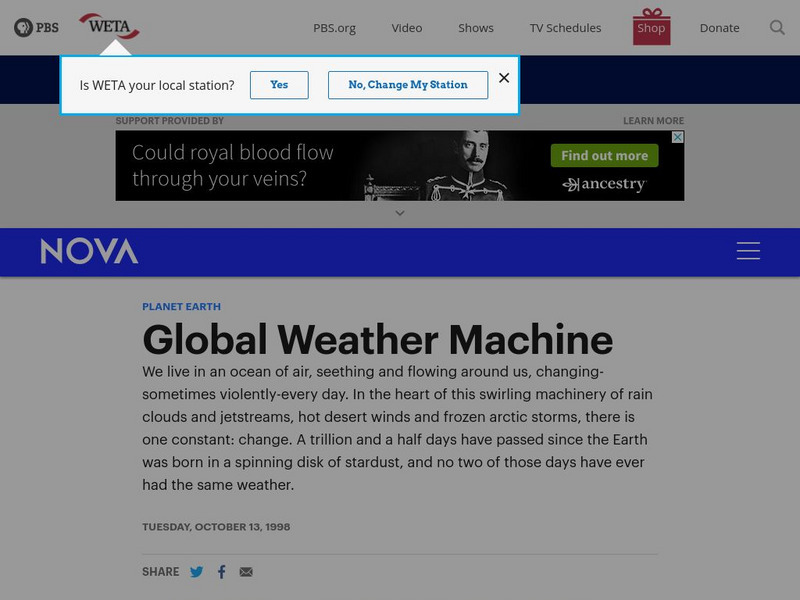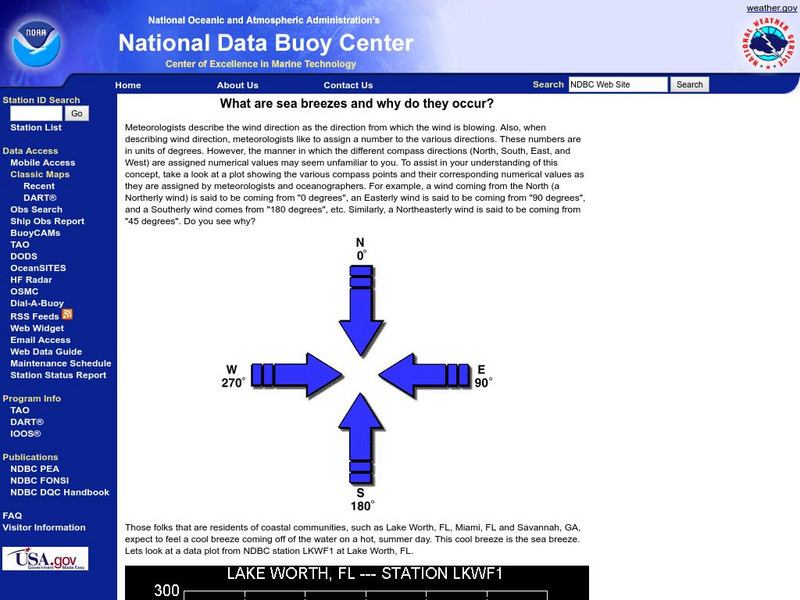New York State Education Department
Regents High School Examination: Earth Science - June 2006
In this earth science worksheet, students answer fifty multiple choice questions and thirty-three short answer questions in preparation for the earth science final exam.
Science 4 Inquiry
Fluid Streams Affecting Weather
The jet stream can reach speeds of up to 250 miles per hour. Scholars learn about the jet stream and ocean currents as they rotate through stations. They answer questions leading them to understand the impact these fluid streams have on...
Colorado State University
Why Do Clouds Form in the Afternoon?
The stability of the atmosphere changes on a daily basis. A kinesthetic lesson models how the stability of the air changes as it's warmed by the sun. Learners connect their models to the changing air currents and movement of warm and...
Colorado State University
Can Gravity Push Something Up?
How does a hot air balloon fly? An experimental lesson has scholars build a balloon from a garbage bag and monitor the movement of air. As the temperature of the air in the balloon increases, gravity moves the denser cool air down,...
Discover Earth
Weather Stations
Transform your classroom into a fully functioning weather station with this series of hands-on investigations. Covering the topics of temperature, precipitation, wind patterns, and cloud formation, these activities engage young...
Curated OER
Snake Spiral
In this convection currents worksheet, students draw, cut and decorate a spiral snake on a sheet of paper. Students attach a piece of thread to its head and hang it over a hot radiator and watch the snake spin as the warm air rises.
Curated OER
Science - 'Why does the wind blow?'
In this earth science worksheet, students read a poem about the wind and learn why the wind blows. After reading the poem and informative paragraphs that follow it, students answer 2 questions regarding the information they read....
Curated OER
Rain Shadows and Sea Breezes
Learners plot the average rainfall for a variety of cities in the United States. Using the map, they work together to determine patterns on which toxicants are transported through the air. They determine the impacts of various weather...
Curated OER
Air Movement
Students observe a series of teacher-led demonstrations about air movement. They explain the existence and movement of air, then list 3 things that they have learned about air. Finally, students go outside and shoot off air cannons.
Curated OER
Air Masses & Fronts
Students identify two distinct air masses and the frontal boundary and determine whether the front is moving in time and in what direction the front is moving.
Curated OER
How is Sound Made?
In this sound worksheet, students will fill in the blank of 4 facts based on what sound different objects make. Based on those facts, students will write in a conclusion about how sound is made.
Curated OER
Is Air a Fluid?
Students discuss the physical properties of fluids and then demonstrate that air carbon dioxide and oxygen) is a fluid by creating currents.
Curated OER
Perpetual Motion
Young scholars discuss movement of air currents and then experiment to create visible models of air currents. Students connect the model to weather patterns.
Curated OER
Winds Over Land vs. Ocean
Learners explore friction and the way it impacts wind over the ocean compared to over land.
Curated OER
Movement of Fronts
Students use a demonstration in order to learn abou the movement of weather fronts.
Other
University of Windsor: Climates on a Rotating Earth
This site offers the text of a college lecture on the atmosphere, with information on the effect prevailing westerlies have on North America.
TeachEngineering
Teach Engineering: Turning the Air Upside Down
Students develop their understanding of air convection currents and temperature inversions by constructing and observing simple models.
Other
Kites as Education: Wind Origins
This "kite science" site offers information on wind and the atmospheric conditions that cause it. From "Principles of Aeronautics."
USA Today
Usa Today: Jet Stream Roars Along High Above Earth
A good explanation of the jet stream is offered with links to other related information.
Other
Cornerstone Networks: Fourth Grade Science Lesson 1
This site, designed as a fourth-grade instructional activity, focuses on the earth's atmosphere with information on prevailing winds.
TeachEngineering
Teach Engineering: Weather Watchers
Students are introduced to some essential meteorology concepts so they more fully understand the impact of meteorological activity on air pollution control and prevention. First, they develop an understanding of the magnitude and...
PBS
Pbs/global Weather Machine
This site explains wind systems as part of a global weather scheme, with illustrations.
University Corporation for Atmospheric Research
Ucar: Fact Sheet for El Nino
This site from the Univ. Corp. for Atmospheric Research provides detailed information on El Nino and its effects on the trade winds is offered at this site, with satellite photos.
NOAA
Noaa: National Data Buoy: What Are Sea Breezes?
National Data Buoy gives a good explanation of what sea breezes are and why they occur. Charts and illustrations are used on this page.


